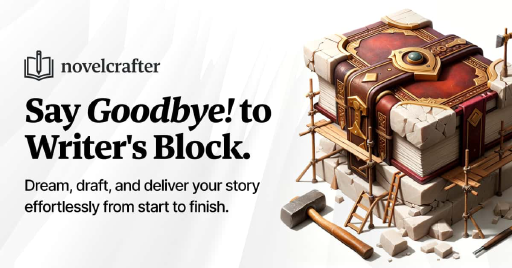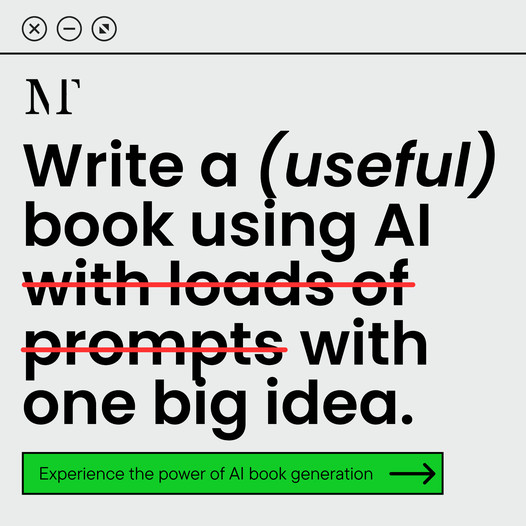Introduction to Story Idea Brainstorming
Dreaming up fresh story ideas is an essential skill for you as a writer. It’s about letting your imagination run wild and weaving tales that can hook your readers. Wrapping your head around the importance of this process will give your writing the boost it needs to shine brighter than ever.
Importance of Generating Creative Story Ideas
Your story ideas are the building blocks for your writing adventure. Without a zesty concept, building your tale with intriguing characters and plots becomes tougher. Here’s why dreaming up creative story ideas matters:
| Reasons | Description |
|---|---|
| Originality | Fresh ideas make your work stand out from the crowd. |
| Inspiration | New concepts light a fire, making writing exciting. |
| Direction | A solid idea paves a way for plot twists and character journeys. |
By focusing on how to brainstorm story ideas, you’ll nurture a treasure trove of intriguing concepts that not only fuel your creativity but grip your audience too.
Benefits of Effective Brainstorming
Kicking off a good brainstorming session doesn’t just help you craft a bunch of interesting story ideas—it ups your writing game overall. Here’s what you might gain:
| Benefits | Description |
|---|---|
| Boosted Imagination | Exploring different routes can lead to amazing ideas. |
| Built-Up Confidence | A rich stash of concepts eases doubts and spurs you on. |
| Splash of Teamwork | Teaming up with others can add fresh takes to your storytelling. |
Trying out different ways in your brainstorming adventures will help you shape your ideas and unlock your full creative mojo. Craving more writing know-how? Check out our guides on beginner writing tips and creative writing exercises.
Pre-Brainstorming Preparation
Ready to spark those creative juices? Setting up for a brainstorming session is like giving your mind a big, warm hug. When the stage is set just right, and you’ve got some nifty tools at your side, ideas flow faster than coffee on a Monday morning.
Setting the Right Environment
Want your brain to dance with ideas? Start by creating a space where your thoughts will do the cha-cha. Check out these tips for shaping up your surroundings:
| Thing to Consider | What to Do About It |
|---|---|
| Quiet Zone | Pick a spot where interruptions are few and far between. |
| Comfy Seating | Make sure your chair and table don’t make you fidget like a restless kid. |
| Proper Lighting | Keep it bright enough to stop squinting but cozy enough to make you feel at home. |
| Inspiring Bits and Bobs | Add some eye candy like art or plants to tickle your brain. |
And hey, if a bit of background music gets you in the zone, crank it up. Just make sure it doesn’t turn into your personal karaoke session.
Tools and Techniques for Brainstorming
Your ideas are gonna need some tools to put them in their place. Got some handy techniques to light up your brainstorming? Here’s what you might want to try:
| Gadget/Method | Why It’s Cool |
|---|---|
| Notebook/Notepad | Fastest way to catch your thoughts before they run off. |
| Digital Gizmos | Use apps for your notes or to map out your mind mess. |
| Sticky Notes | Jot ideas and plaster ’em all over for a visual brainstorm explosion. |
| Whiteboard/Chalkboard | Draw and sketch ideas til they fit together like puzzle pieces. |
And don’t forget things like mind-mapping or just scribbling down anything and everything without pausing. These tricks can flip that creativity switch to wide open. Find your groove, and see what method makes your brain dance.
 What Poetry Feels Like
What Poetry Feels LikeWith a vibe that says “Let’s create!” and some trusty tools in your kit, your brainstorming session will be cooking with gas. Need more pointers on getting that story polished? Check out tips on story outlining or sink your teeth into better storytelling advice. Get those creative wheels spinning!
Brainstorming Techniques
Cooking up story ideas can sometimes feel tougher than getting a toddler to eat their veggies. But applying a few handy brainstorming tricks can actually make it enjoyable. Here’s a roundup of three methods to spice up your idea generation game.
Mind Mapping
Mind mapping is like doodling with a purpose. It’s a crafty way to toss your thoughts onto paper in a visual splatter of creativity. Start with your big idea in the center and let branches shoot off like fireworks into subtopics—think characters, settings, conflicts, or themes. This can help sew connections between ideas while stretching your imagination.
| Steps for Mind Mapping | Description |
|---|---|
| 1. Identify your central idea | What’s the heart of your story? |
| 2. Create branches | Link offshoots from the big idea to smaller bits. |
| 3. Add details to branches | Throw in characters, plot quirks, or settings. |
| 4. Review your map | Spot links and spark new ideas. |
For another burst of inspiration, our article on creative writing exercises might come in handy.
Freewriting
Freewriting is like letting your thoughts run wild without worrying about spilled paint on the canvas. Set a kitchen timer for 10 to 15 minutes and just let the words fly out. This technique can bust through those mental blocks and get the creative juices sloshing around.
| Freewriting Process | Steps |
|---|---|
| 1. Set a timer | Decide how long to write like no one’s watching. |
| 2. Write freely | Spill your brain onto paper without restraint. |
| 3. Avoid editing | Resist the urge to tidy as you write. |
| 4. Review afterwards | Sift through to unearth nuggets worth polishing. |
Need a little nudge to get the words rolling? Dive into our easy writing prompts for a kickstart.
Character Interviews
Talking to your imaginary friends might sound nutty, but it’s pure gold for character depth. By coaxing your characters to spill the beans about their dreams, fears, and deep dark secrets, you’ll uncover the juicy story bits you’re looking for.
| Character Interview Questions | Purpose |
|---|---|
| What is your biggest fear? | To dig into their soft spots. |
| What do you want most in life? | To lay bare their wants. |
| Describe a significant event in your past. | To unearth backstory and growth. |
| How do you see yourself in the future? | To unveil hopes and possible pitfalls. |
For more on crafting lifelike characters, check out our article on how to create realistic characters.
Using these techniques not only ramps up the excitement in brainstorming but also builds a sturdy framework for your stories and characters. Toss one, two, or even all of these methods into your creative toolkit and watch your ideas sparkle!
Finding Inspiration
So, you’re on the hunt for that next big idea? Inspiration is like the secret sauce of creativity – you know it’s out there, but sometimes it’s evasive. No worries, though! This section’s got your back with some neat ways to fire up your imagination, like digging into your life stories, trying out new genres, and playing around with writing prompts.
Drawing from Personal Experiences
Think back through your own life – there’s a treasure trove of stories waiting to be told. You’ve got your share of ups, downs, and those “Oh wow!” moments, right? Turn these into believable tales that folks can really vibe with. Here’s a cheat sheet for mining story gold from your life:
| Experience Type | Ideas to Knock Around |
|---|---|
| Major Life Events | Birthdays, graduations, weddings – the usual suspects |
| Emotions | Love, loss, happiness, fear – the big four |
| Relationships | Buddies, family feuds or fierce rivals |
| Challenges | Mountains conquered or dreams chased |
Pinning down these bits into your stories can flesh out plots and characters in a way that’s fresh and compelling. If you’re after a nudge on how to wield your life tales in writing, check out our beginner writing tips.
Exploring Different Genres
Ever tried writing outside your comfort zone? It’s like giving your regular genre a little vacation. Experiment with different themes, settings, and character gigs. Peek at these genres:
| Genre | Big Elements |
|---|---|
| Fantasy | Magic, mythical beasts, and alternate realms |
| Science Fiction | Futuristic gizmos, space jaunts, alien buddies or foes |
| Mystery | Crimes, sleuths, and tension just hanging in the air |
| Romance | Heartthrobs, sparks flying, and relationship roller coasters |
Reading across these genres can light a fire under your creativity. Why not mix and match? Mash-up romance with fantasy or blend mystery with sci-fi, why not! If you’re curious about more genre-hopping ideas, take a look at writing advice for new authors.
Using Writing Prompts
Sometimes, you need a little jumpstart in the idea department. Writing prompts are your buddies here. They’ll kick you out of the ordinary and into a world of fresh ideas. Here’s a quick list of prompts to noodle on:
| Prompt Category | Sample Prompt |
|---|---|
| Character-Centric | Dream up a character who stumbles upon a hidden flair. |
| Situational | Paint a picture of a day when everything goes belly-up. |
| Dialogue | Draft a scene where two folks cross paths after ages. |
| Emotional | Pen down a heartfelt letter from someone wrestling with loss. |
Browse some easy writing prompts online to get the creative juices flowing. Let your mind dance around wild ideas – no holding back!
By weaving in bits of your own life, exploring different genres, and embracing writing prompts, you’ll turbo-charge your idea factory and brew up some fantastic stories. Give these tips a try and unleash your storytelling groove!
Refining Your Ideas
Picture this: You’ve got a bunch of story ideas swimming around in your head. Now, how do you turn those random thoughts into something readers will love? The trick is honing those ideas, shaping characters and plot, and sketching a map for your story’s journey.
Identifying Strong Concepts
Hunt through your brainstorm and pick out the treasures. The good stuff. Here’s how you figure out which ideas are gold:
| Criteria | Questions to Ask |
|---|---|
| Originality | Is it different or does it bring something new to the table? |
| Emotional Impact | Does it hit home or tug at heartstrings? |
| Growth Potential | Can it stretch and grow into a whole story filled with people and drama? |
These criteria are your compass. The right idea will be your story’s backbone, making it pop for readers.
Developing Characters and Plot
Once you’ve settled on the gems, it’s about flesh and bones—breathing life into your characters and plot. Think about your main players: their desires, histories, and the troubles they face. Here’s how to pump up your character game:
- Character Profiles: Sketch out who they are, their dreams, and how they’ll change.
- Backstory: Their past matters. What happened before page one that’s driving them now?
As for plot, it needs a sturdy frame. The classic three-act structure is your friend here:
| Plot Structure | Key Elements |
|---|---|
| Act 1 | Characters walk on stage; something shakes them up. |
| Act 2 | Tension builds; people clash and grow. |
| Act 3 | Everything peaks; how it all wraps up. |
Need more help? Look into resources on building realistic characters and crafting killer plots here.
Creating a Story Outline
An outline is your trail map in the wilderness of creativity. Summarize your plot first, then fill in the scenery with detailed scenes. Choose the outline style that clicks with you:
- Bullet Points: Simple list of what’s happening.
- Index Cards: One scene per card let’s you shuffle till it’s just right.
- Traditional Outline: Organized list with main chunks and their bits.
Outlines keep you from getting lost, helping you see where the story needs more oomph or a better flow. For a step-by-step guide, hit up our piece on story outlining.
By zeroing in on nifty ideas, crafting characters with depth, and plotting your tale carefully, you’re on the road to creating a story that’s worth attention. For more advice and practice, dive into our sections on beginner writing tips and creative writing exercises. Happy writing!
Putting Ideas into Action
You’ve got a head full of story ideas, now it’s time to turn them into actual written tales. Let’s talk about setting doable writing targets, breaking through writer’s block and kick-starting your writing groove.
Setting Realistic Writing Goals
Setting achievable goals is key to boosting your writing mojo and keeping you on track. Using SMART goals (that’s Specific, Measurable, Achievable, Relevant, and Time-bound to the uninitiated) can help keep things organized.
| Goal Type | Example | Time Frame |
|---|---|---|
| Daily Writing Goal | Toss 500 words onto the page | Daily |
| Weekly Completion Goal | Polish off a chapter by week’s end | Weekly |
| Revision Goal | Spruce up two pages a day | Daily |
Feel free to tweak your goals according to your rhythm. Don’t forget to pat yourself on the back for the small wins—they keep the fire burning. For more ideas, check out our piece on beginner writing tips.
Overcoming Writer’s Block
Writer’s block might mess with your creativity, but don’t worry; there’s plenty you can do to shake it off. Here’s a few tricks:
- Change Your Environment: A new scene can spark fresh ideas.
- Set a Timer: Short, focused sprints with breaks can help.
- Freewrite: Let your thoughts flow for a set time without overthinking.
- Use Writing Prompts: Engage with easy writing prompts to get the words rolling.
Bumping into writer’s block often? Dive into our article on overcoming writer’s block for strategies tailored to bust through it.
Starting the Writing Process
Kicking off your writing can seem a bit intimidating, but with a solid plan, it’s smoother sailing. Here’s how to get rolling:
- Create an Outline: Lay out your ideas for a clear path. Peep our guide on how to outline a story for tips.
- Develop Characters: Bring your characters to life—understand what makes them tick with tips from how to create realistic characters.
- Write the First Draft: Don’t stress about getting it perfect on the first go. Just get your thoughts on paper; you can polish them later.
Following these steps will help set you off right. For more on building a solid writing habit, dig into our article on how to develop a writing habit.


 Grab my poetry book, 'we're all just wanderers in the end' Here
Grab my poetry book, 'we're all just wanderers in the end' Here AD: Your Book Finally Written...
AD: Your Book Finally Written...